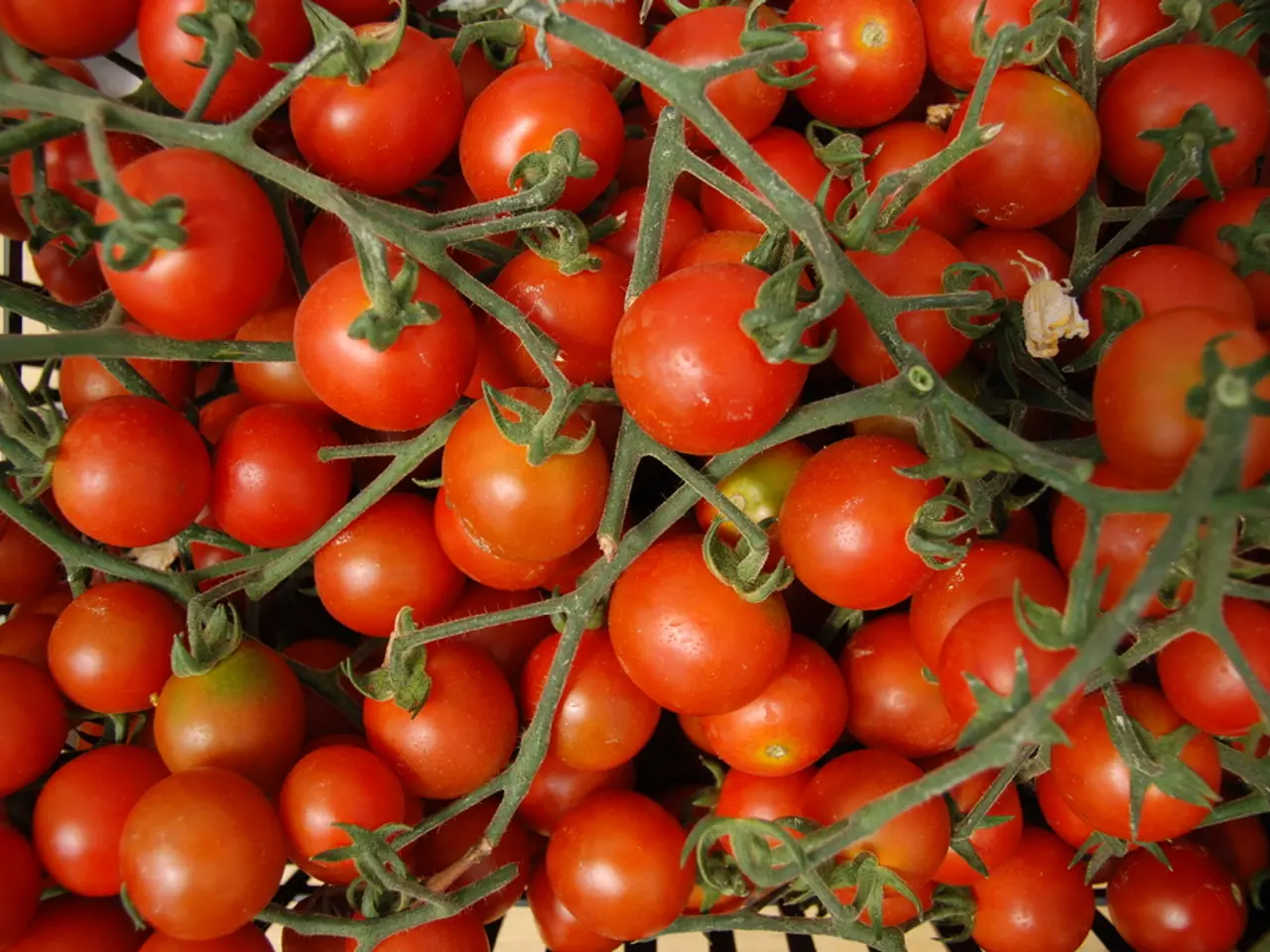Issues Encountered in Growing Tomatoes, Potentially Threatening Your Harvest (and Remedies)
Besting Your Botanical Battles: Tackling Tomato Troubles with Ease
Longing for a lush, bountiful tomato garden? Here's a rundown of the ten most common tomato plant woes, along with solutions to help you grow juicy, garden-fresh tomatoes with ease.
][1]
1. Tomato Hornworms
These unsightly green pests can decimate your tomato plants, munching their way through mature tomatoes in no time. To fight back, give borage plants a spot among your tomatoes or grow basil and marigolds with your tomato bed, as these plants can help deter hornworms. To catch and remove hornworms at night, use a blacklight flashlight. Once you find them, pop them into a warm soapy water bath before disposing of them.[2]
2. Early Blight
Early blight is an early-season issue caused by a fungus. This problem leads to brown spots on leaves. To prevent the spread of early blight, clean up your garden beds after the fall by removing all leftover produce.
3. Late Blight
Late blight, another fungus, causes scorched, brown leaves. It thrives when water splashes on leaves, then dries in the sun. To keep this issue at bay, avoid overhead watering of tomatoes. If your plants are infected, remove and discard affected leaves and, in severe cases, entire plants.
4. Blossom End Rot
If you see brown papery patches at the bottom of your tomatoes, you may be grappling with blossom end rot. Address this problem by regular watering, adding ground-up eggshells to the soil, and mulching around tomatoes.
5. Deer
Residents of deer country face a continuous battle to keep these hungry herbivores away from their prized tomato plants. Consider fencing your garden if you're plagued by these unwanted visitors.
6. Squirrels
Squirrels may be adorable from a distance, but they can cause considerable damage in garden beds. To deter them, use a range of strategies, such as scattering used coffee grounds, hanging shiny devices, or employing physical barriers.[3]
7. Groundhogs
If groundhogs have taken up residence in your neighborhood, they can rapidly devastate your vegetable garden. Try using raw eggs as lures, placing them inside their tunnels and covering them with soil.[4]
8. Aphids
Aphids can infest gardens, often spreading to indoor plants as well. To deter aphids, use companion plants like marigolds to lure them away, or simply spray affected plants with water or homemade garlic sprays.
9. Lack of Garden Support
Failure to provide proper support for your tomato plants can lead to poor fruit growth and increased susceptibility to fungal diseases. Be sure to provide tomatoes with proper staking, caging, or other forms of support to keep fruit from rotting.
10. Other Tomato Plant Problems
While this list covers the most common issues, a host of other problems may arise. Learn to recognize potential issues such as sun scorch, cold temperatures, poor watering habits, excessive tomato growth, insufficient growing space, jar shortages, and trouble ripening tomatoes as the growing season progresses.
By implementing these solutions, you'll be well on your way to a healthy, thriving tomato garden with no shortage of delicious fruits to enjoy. Happy gardening!
Sources:
[1] Henkens, W. (2020). Tomato hornworms chomping on your garden? The Edible Garden. Retrieved July 6, 2023, from https://www.theediblegarden.net/how-to-get-rid-of-tomato-hornworms/
[2] Gilbert, J. (2018). Tomato Hornworm. Gardener's Path. Retrieved July 6, 2023, from https://www.gardener-path.com/tomato_hornworm.php
[3] Grandinetti, M. (2022). How to prevent blossom end rot in tomatoes and peppers. Today's Homeowner. Retrieved July 6, 2023, from https://www.todayshomeowner.com/tomato-pepper-blossom-end-rot/
[4] Mission Organics. (2022). How to get rid of groundhogs in the garden. The Modern Garden. Retrieved July 6, 2023, from https://www.themoderngarden.com/groundhogs-garden/
[5] Cooper, M. (2022). The 5 natural ways to get rid of aphids in the houseplants and garden. Gardening Know How. Retrieved July 6, 2023, from https://www.gardeningknowhow.com/garden-how/pests/natural-aphid-control.htm
- To add a touch of organic charm to your tomato garden, intersperse borage, basil, and marigolds among your plants to deter pests like tomato hornworms.
- After a successful tomato harvest, don't forget to clean up your garden beds for the fall to prevent the spread of early blight, a fungus that causes brown spots on leaves.
- Embrace eco-friendly gardening practices such as regular watering, adding organic matter like compost to the soil, and mulching around tomatoes to combat blossom end rot, a common issue that results in brown patches at the tomato's bottom.
- For a sustainable lifestyle, consider incorporating home-and-garden strategies like scattering used coffee grounds or employing physical barriers to deter harmless but destructive visitors like squirrels from your vegetable garden.
- If nuisance animals like groundhogs are causing trouble in your garden, try using natural lures such as raw eggs to deter them from your prized tomato plants.
- To ensure a bountiful tomato yield, make sure to provide adequate support for your plants such as staking, caging, or trellising to prevent poor fruit growth and promote a healthier plant life.
- By staying vigilant and identifying potential issues like sun scorch, cold temperatures, poor watering habits, excessive growth, insufficient space, jar shortages, and trouble ripening tomatoes, you can address problems as they arise and maintain a thriving tomato garden.







